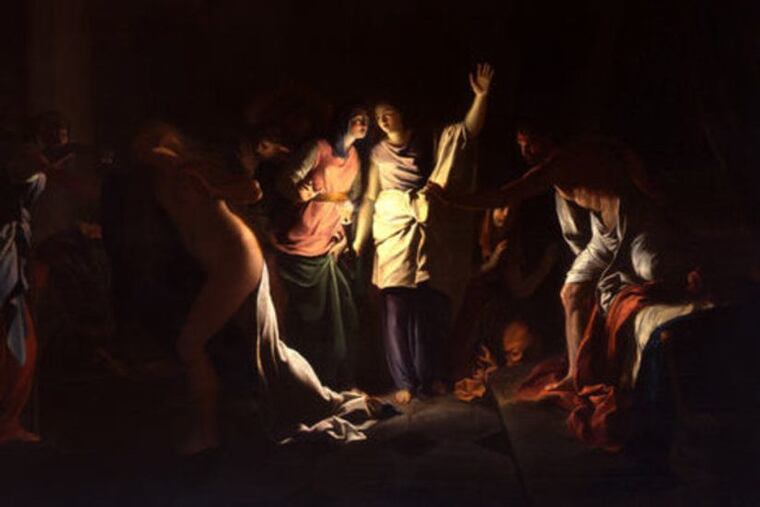'I feel as though the place has been raped': Criticism of La Salle art sale mounts
University plans to use funds from art sales to bolster strategic initiative - a use precluded by museum ethical codes.

The shock waves set off by the decision of La Salle University's trustees to sell 46 works of art owned by the university art museum roiled across the cultural landscape Wednesday.
"I feel as though the place has been raped," said Caroline P. Wistar, a longtime curator of the museum who retired about a decade ago. "They're selling all of the very best things — a Degas drawing, a Vuillard. This is major. I feel like they've killed the museum."
La Salle officials said Tuesday that the university planned to sell paintings, sculptures, and drawings selected by Christie's auction house and plow the expected return of $4.8 million to $7.3 million into teaching and learning initiatives.
But doing so appears to violate ethical guidelines subscribed to by virtually all museums in the country.
The La Salle University Art Museum is an unaccredited member of the American Association of Museums, whose ethical code holds that "in no event shall [collections sales] be used for anything other than acquisition or direct care of collections."
Timothy Rub, head of the Philadelphia Museum of Art and past president of the Association of Art Museum Directors, found the La Salle proposal troublesome. He wondered why La Salle would "step away" from its commitment to building a teaching museum "as a matter of financial expediency."
"Is a gain of $4.8 to $7.3 million in operating funds really a game-changer for the university, or will this simply leave its museum — which is acknowledged as being an enormously valuable resource for faculty and students — weakened?" Rub asked. "It's one thing to use deaccessioning [the sale of artworks] as a means for strengthening the collection by 'trading up.' Indeed, the [Association of Art Museum Directors] guidelines provide for that. But it's another to use the funds for something else entirely, and not necessarily a good thing either for the museum or the university."
Klare Scarborough, current La Salle museum director, did not return telephone or email inquiries seeking comment.
The decision was approved by the school's board of trustees and announced by university president Colleen M. Hanycz on Tuesday. University spokeswoman Jaine Lucas said the decision "is a strategic and good use of our assets," adding that "we are doing what we feel is in the best interest of our students."
Sales from collections are not in their "very nature … a bad thing," said Brooke Davis Anderson, who became museum director at the Pennsylvania Academy of the Fine Arts six months ago. "But … it is important that the funds from deaccessioning go back into the collection" for conservation, preservation, and building it.
"If leaders of our institutions looked at our art collections purely from a dollar value, it could be used to support any museum in strife. We work hard to stay open and be sustainable for the public."
The university, in consultation with Christie's, identified five pieces from the La Salle museum as having the greatest revenue potential mitigated by lost pedagogical value, said Lucas: Dame Elisabeth Frink's sculpture Walking Madonna; Jean-Auguste-Dominique Ingres' Virgil Reading the Aeneid Before Augustus; Dorothea Tanning's Temptation of St. Anthony; Georges Rouault's Le Dernier Romantique (The Last Romantic); and Albert Gleizes' Man in the City (L'Homme Dans la Ville).
The goal is to raise at least $5 million.
The five pieces alone could bring in between $2.3 million and $3.45 million, said Lucas. Also among the group to be sold is a portrait by Thomas Eakins, Mrs. Matilda Searight; an ink on paper by Henri Matisse; an oil study by Alex Katz, Study for Portrait of Neil Welliver; and William Trost Richards' Rocky Coastline, Cornwall.
(A full list with images of works to be sold can be found at: http://artcollection.lasalle.edu/graphics/Deaccessions_2018.pdf)
Officials at several other college-based museums said they have not sold art or considered selling it to fund other aspects of the school's operation.
Charles Stainback, director of the Philip and Muriel Berman Museum of Art at Ursinus College, said the college administration has never broached the possibility of selling art for other aspects of the school's operations.
"The support of the museum by the administration is unwavering," Stainback said, "so they would never suggest anything like that."
"It goes back to the basic principles that we live and work by in the museum world," he continued. "We collect art. We exhibit artwork and we educate people about artwork."
But as more colleges struggle with budget problems as a result of a decline in the number of high school graduates, less government funding, and other pressures, some have looked to their art collections for revenue. At Brandeis University in Massachusetts, a plan to close its museum and sell its art was reversed after backlash from students and faculty and legal action. Randolph College in Virginia was criticized for its decision to sell a George Bellows painting worth more than $25 million.
For Wistar, who worked to build the La Salle collection with Brother Daniel Burke, museum founder and La Salle president from 1969 to 1976, the sale represents something akin to a death in the family. She said she was not consulted about any aspect of the sale and did not learn any details until late Tuesday.
"I don't think anyone who knew anything about art was consulted, except Klare Scarborough," Wistar said.
"I was so shocked. The whole thing is senseless. You work hard for 30 years and then this."